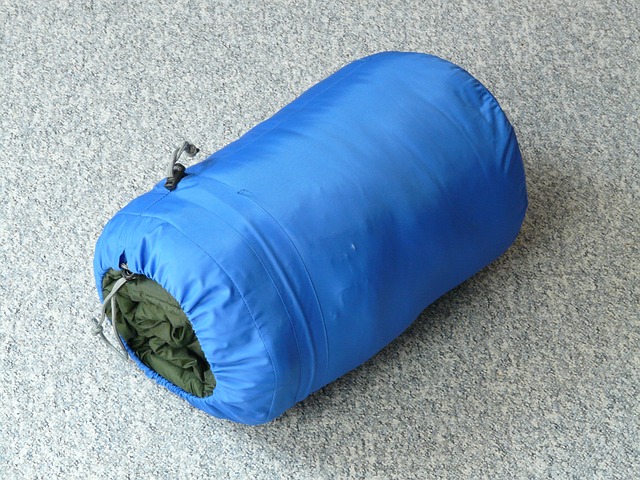When planning for outdoor activities such as hiking, backpacking, or mountaineering, a sleeping bag is one of the essential items to consider. Sleeping bags keep you warm and comfortable during your outdoor adventure and ensure that you get the much-needed rest to recharge your body. However, not all sleeping bags are created equal. Each outdoor activity requires a specific type of sleeping bag designed to meet the unique needs of that activity.
In this guide, I will discuss the different types of sleeping bags for hiking, backpacking, and mountaineering, factors to consider when choosing a sleeping bag, and examples of sleeping bags designed for each activity. By the end of this post, you will have a better understanding of what to look for when choosing a sleeping bag for your next outdoor adventure.
Sleeping Bags for Hiking
Hiking is a popular outdoor activity that involves walking on natural paths or trails for extended periods. The right sleeping bag is an essential item to ensure that you get a comfortable and restful night’s sleep while hiking. Here are some factors to consider when choosing a sleeping bag for hiking:
- Weight – When hiking, you want to carry lightweight gear, including your sleeping bag. Look for a sleeping bag that is lightweight and easy to carry in your backpack.
- Temperature rating – Temperature ratings determine the lowest temperature that the sleeping bag can handle. Choose a sleeping bag with a temperature rating suitable for the weather conditions in your hiking destination.
- Insulation type – Sleeping bags come with different types of insulation, such as synthetic, down, or a combination of both. Synthetic insulation is best for wet conditions, while down insulation is lighter and more compressible.
- Shape – Mummy-shaped sleeping bags are best for hiking as they are lighter and more compact.
Here are 3 excellent sleeping bags designed for hiking:
- The North Face Cat’s Meow – This sleeping bag is designed for three-season hiking and has a temperature rating of 20°F. It is lightweight and compressible, making it easy to pack in your backpack.
- Therm-a-Rest Questar 20 – This sleeping bag is suitable for three-season hiking and has a temperature rating of 20°F. It features a unique zipper design that allows you to vent excess heat.
- Kelty Cosmic 20 – This sleeping bag is lightweight and compressible and has a temperature rating of 20°F. It features a mummy shape design, making it easier to carry in your backpack.
Choosing the right sleeping bag for hiking is essential to ensure that you get a comfortable and restful night’s sleep during your outdoor adventure. Keep these factors in mind when choosing a sleeping bag, and consider the examples provided when making your decision.
Sleeping Bags for Backpacking
Backpacking involves carrying all your camping gear, including your sleeping bag, in a backpack for several days or weeks of outdoor adventure. A backpacking sleeping bag should be lightweight, compressible, and warm enough to handle the weather conditions in your destination. Here are some factors to consider when choosing a sleeping bag for backpacking:
- Weight – Look for a sleeping bag that is lightweight and easy to carry in your backpack. You don’t want to carry extra weight that will slow you down during your hike.
- Compressibility – A sleeping bag that compresses down to a small size is essential when backpacking. It should fit comfortably in your backpack, leaving enough space for other essential items.
- Temperature rating – Choose a sleeping bag with a temperature rating suitable for the expected weather conditions in your backpacking destination.
- Insulation type – Down insulation is the most compressible and lightweight, making it a popular choice for backpacking sleeping bags. Synthetic insulation is more affordable and suitable for wet conditions.
Here are 3 great sleeping bags designed for backpacking:
- REI Co-op Magma 15 – This sleeping bag is lightweight, compressible, and has a temperature rating of 15°F. It features water-resistant down insulation that keeps you warm in wet conditions.
- NEMO Disco 15 – This sleeping bag is designed for backpacking and has a temperature rating of 15°F. It features a unique spoon shape design that provides more room for your knees and elbows.
- Big Agnes Lost Dog 15 – This sleeping bag is lightweight, compressible, and has a temperature rating of 15°F. It features synthetic insulation, making it suitable for wet conditions.
Choosing the right sleeping bag for backpacking is essential to ensure that you get a comfortable and restful night’s sleep during your outdoor adventure. Keep these factors in mind when choosing a sleeping bag, and consider the examples provided when making your decision.
Sleeping Bags for Mountaineering
Mountaineering involves climbing mountains and usually requires camping at high altitudes where temperatures can drop significantly. Therefore, a mountaineering sleeping bag must be warm, durable, and suitable for extreme weather conditions. Here are some factors to consider when choosing a sleeping bag for mountaineering:
- Temperature rating – A mountaineering sleeping bag should have a temperature rating suitable for extremely cold weather conditions. Look for a sleeping bag with a temperature rating of -20°F or lower.
- Insulation type – Choose a sleeping bag with high-quality down insulation or a combination of down and synthetic insulation. Down insulation is lightweight and compressible, while synthetic insulation is more affordable and suitable for wet conditions.
- Shape – Mummy-shaped sleeping bags are best for mountaineering as they provide better warmth and insulation.
- Durability – Mountaineering sleeping bags need to withstand extreme weather conditions and be durable enough to last for several years.
Here are 3 top sleeping bags designed for mountaineering:
- Mountain Hardwear Phantom – This sleeping bag is lightweight, compressible, and has a temperature rating of -40°F. It features high-quality down insulation and durable outer fabric.
- Marmot Col -20 – This sleeping bag is designed for extreme weather conditions and has a temperature rating of -20°F. It features a unique trapezoidal foot box design that provides more room for your feet.
- The North Face Inferno – This sleeping bag is designed for mountaineering and has a temperature rating of -20°F. It features a combination of high-quality down and synthetic insulation.
Choosing the right sleeping bag for mountaineering is essential to ensure that you get a comfortable and restful night’s sleep during your outdoor adventure. Keep these factors in mind when choosing a sleeping bag, and consider the examples provided when making your decision.
Other Considerations
Aside from the factors mentioned above, here are some other considerations to keep in mind when choosing a sleeping bag for your outdoor activities:
- Gender-specific sleeping bags – Women’s sleeping bags are designed to fit a woman’s body shape and have additional insulation in the foot box and torso areas. Consider a gender-specific sleeping bag to ensure maximum comfort during your outdoor adventure.
- Size – Ensure that the sleeping bag you choose fits your body size and height. A sleeping bag that is too small can be uncomfortable, while one that is too big can cause cold spots.
- Shape – Sleeping bags come in different shapes, including rectangular, semi-rectangular, and mummy-shaped. Mummy-shaped sleeping bags are warmer and more compressible, while rectangular-shaped sleeping bags are more spacious.
- Sleeping pad – A sleeping pad is essential to provide insulation between you and the ground. Ensure that you choose a sleeping pad that is compatible with your sleeping bag and provides the required level of insulation.
- Maintenance and storage – Proper maintenance and storage of your sleeping bag can increase its lifespan. Follow the manufacturer’s instructions for cleaning, drying, and storing your sleeping bag to ensure that it stays in good condition.
Consider these factors when choosing a sleeping bag for your outdoor activities. A good sleeping bag is essential to ensure that you get a comfortable and restful night’s sleep during your outdoor adventure.
Conclusion
In conclusion, a good sleeping bag is essential for a comfortable and restful night’s sleep during outdoor activities such as hiking, backpacking, and mountaineering. When choosing a sleeping bag, consider factors such as weight, compressibility, temperature rating, insulation type, shape, and durability. Additionally, other considerations, such as gender-specific sleeping bags, size, shape, sleeping pad, and maintenance and storage, should be kept in mind when making your decision.
For hiking, consider a lightweight and compact sleeping bag with a suitable temperature rating. For backpacking, choose a sleeping bag that is compressible, lightweight, and has a temperature rating suitable for the weather conditions in your destination. And for mountaineering, choose a sleeping bag with high-quality insulation, a suitable temperature rating, and a durable outer fabric.
Remember that a good sleeping bag is an investment that can last for several years if well-maintained. Follow the manufacturer’s instructions for cleaning, drying, and storing your sleeping bag to ensure that it stays in good condition. With the right sleeping bag, you can enjoy a comfortable and restful night’s sleep during your outdoor adventures.










